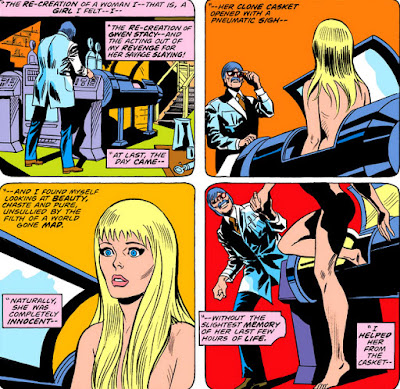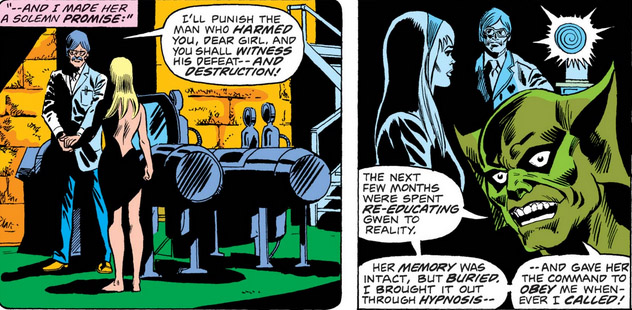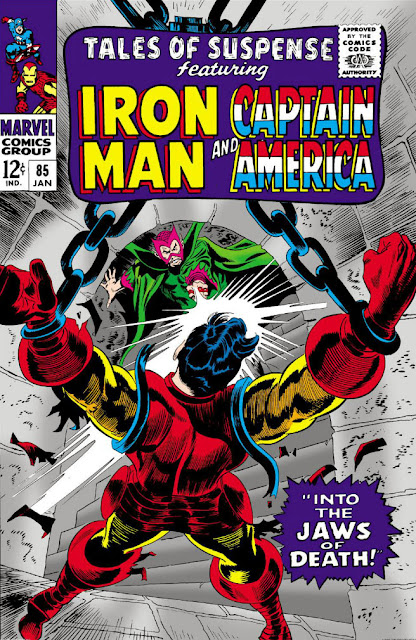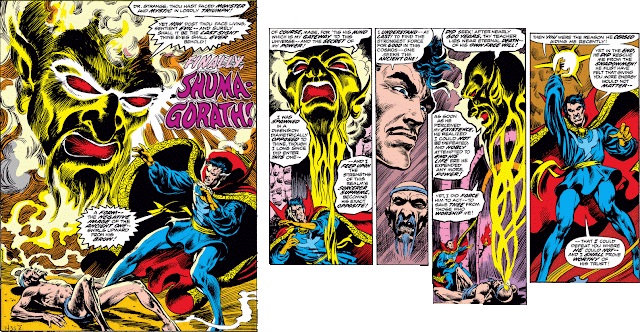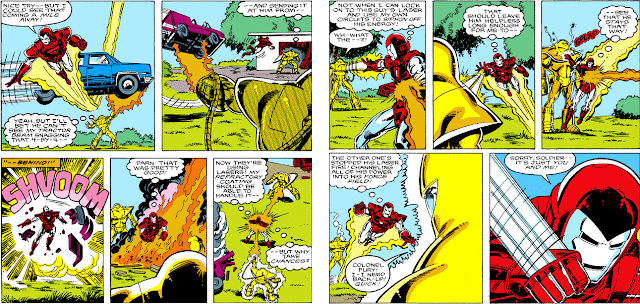Brief but fierce, Thor's clash with Zeus during the Olympian ruler's attack on the Avengers was riveting in both story and art, and remains one of my favorite meetings of the two--one of my few favorites, as it turns out, since the adversarial meetings between these two storm gods were quite rare, to my knowledge. Only once before did the two meet in battle, during the mythical ten-year siege of Troy by the Achaeans (or the Argives, as they're referred to in the Marvel story) which is set in motion when Paris, Prince of Troy, elopes with Helen, the queen of Sparta, and returns with her to his walled city--thus causing a coalition of Greeks to set sail for Troy in order to seek a mixture of justice and revenge for this affront.
 It's a young Thor, still cocky and impulsive, who enters the picture when his half-brother, Loki, explores a dark fissure (on his own impulse) which Thor recognizes as the same type which once led him to Olympus and a first-time meeting with Hercules; and so Thor pursues Loki, but to no avail, as Thor's path displaces him in time and deposits him, bereft of memory, in what is today northwest Turkey and a small distance from ancient Troy, where he is befriended by the young man named Aeneas and escorted inside. Along the way, Aeneas, one of the allies of Troy during this conflict, tells Thor the entire tale of the war with the Greeks which, at this point, is nearly in its ninth year; and having seen Thor's strength, Aeneas notes that Thor would be a valued ally to the Trojans, though Thor declines the offer for the time being.
It's a young Thor, still cocky and impulsive, who enters the picture when his half-brother, Loki, explores a dark fissure (on his own impulse) which Thor recognizes as the same type which once led him to Olympus and a first-time meeting with Hercules; and so Thor pursues Loki, but to no avail, as Thor's path displaces him in time and deposits him, bereft of memory, in what is today northwest Turkey and a small distance from ancient Troy, where he is befriended by the young man named Aeneas and escorted inside. Along the way, Aeneas, one of the allies of Troy during this conflict, tells Thor the entire tale of the war with the Greeks which, at this point, is nearly in its ninth year; and having seen Thor's strength, Aeneas notes that Thor would be a valued ally to the Trojans, though Thor declines the offer for the time being.That is, until he witnesses the battle outside the city between Paris and Helen's husband, Menelaus--a match which results in the gravely wounded Paris being saved by the goddess Aphrodite, a sight which returns Thor's memories in full and has him following her on her return to Olympus. The Olympians have been closely observing the Trojan war, though Zeus has forbidden any interference on their part; still, as is evident, several in Zeus's court have covertly participated and taken sides in the conflict, with Aphrodite and Ares aiding Troy but Athena and Hera siding with the Greeks. And when Thor spots Athena's apparent efforts to have one of the Lycian allies slay Menelaus, Thor acts to deflect the deadly arrow--but in so doing, shatters the fragile truce between Troy and the Greeks, and causing all-out war to erupt on the battlefield, as Athena truly intended.
Yet it's the near-fatal injury to Aeneas in that carnage which causes Thor to pick his own side in the conflict--and the sight does not please one who still strives for the gods' neutrality.
And so, despite the continued interference of his own subjects in the battle, Zeus's tunnel vision zeroes in on the more overt influence at hand--a force which could swiftly reveal the gods' hand in this war beyond all doubt, despite the Thunder God's subterfuge, and which now demands his direct intervention.









